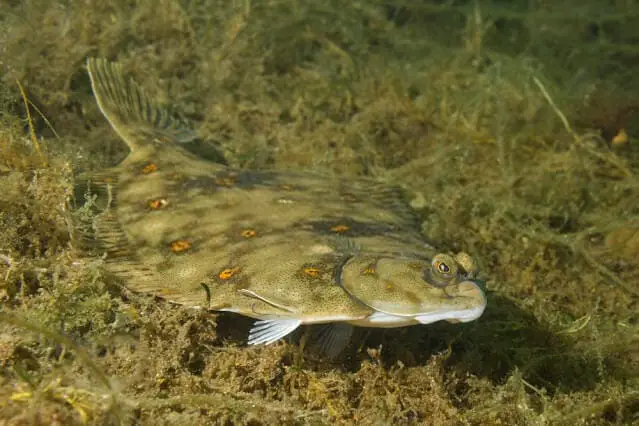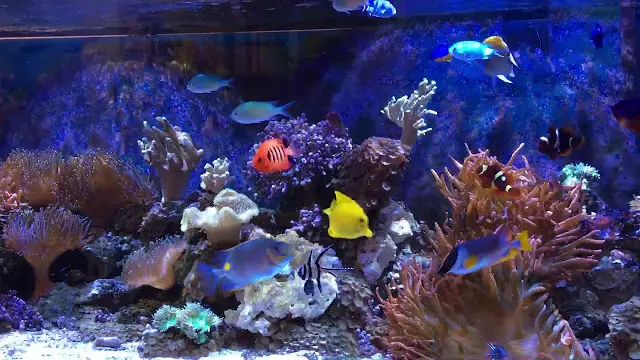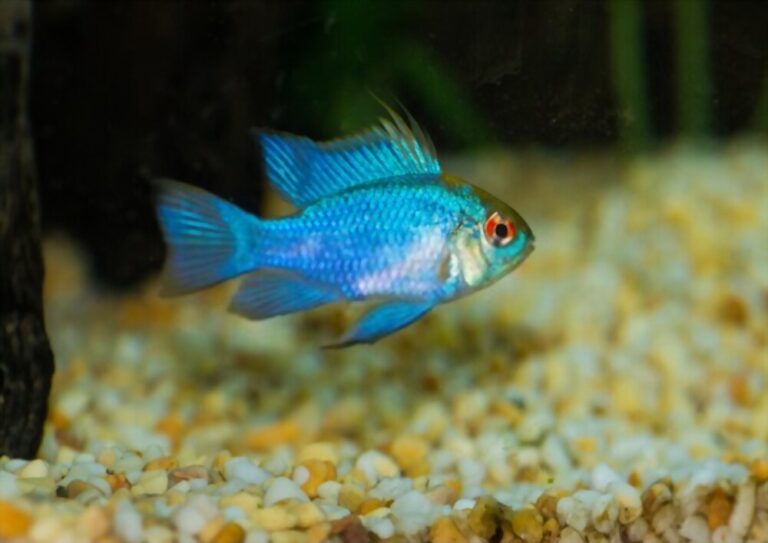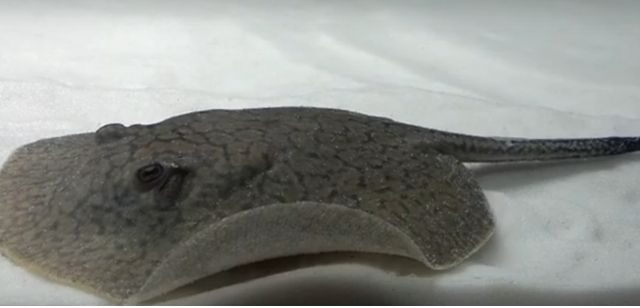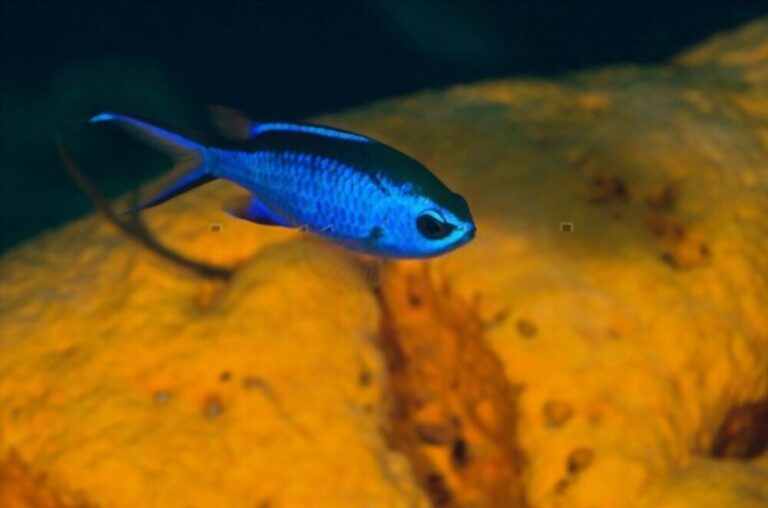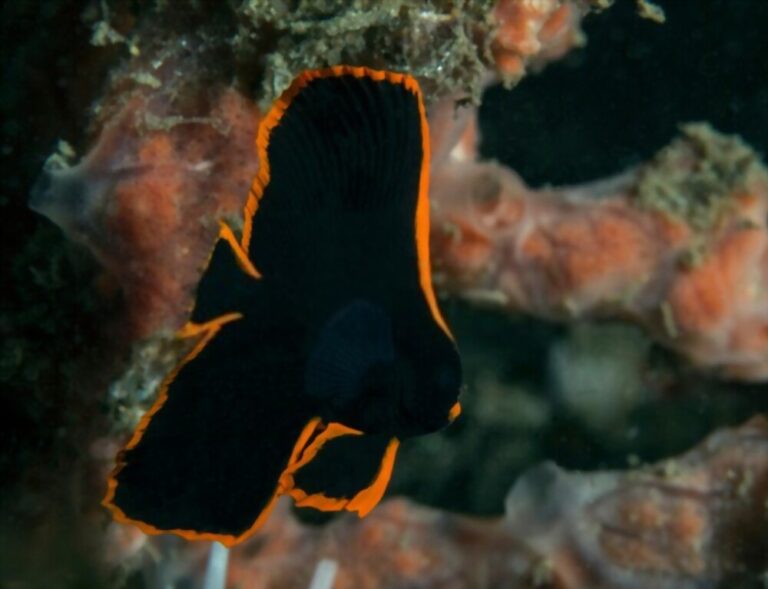Clown Killifish: Size, Behavior, Diet, Tank, Breeding, Tank Mates
Clown killifish is a bony fish species endemic to Africa’s freshwaters, where it is mostly centered in slow-moving rivers, ponds, and lakes of Guinea, Sierra Leone, and Liberia.
It is also commonly known as banded panchax and rocket killie. It was first described under the scientific name of Haplochilus annulatus, but the American killifish association knows it by the name Epiplatys annulatus.
Clown Killifish Size
They are tiny fish. The males are a little larger than the females. The maximum length a male can attain is just one and half-inch (1.5 inches), while the females are half an inch smaller than the males.
The interesting thing related to their miniature size is that their eggs are even way smaller than those of other small fishes. To be more precise, a clown killifish’s egg is less than one millimeter in diameter.
Appearance
Clown killifish have a fascinating and captivating appearance making them one of the most liked among other killifish species, and why not?
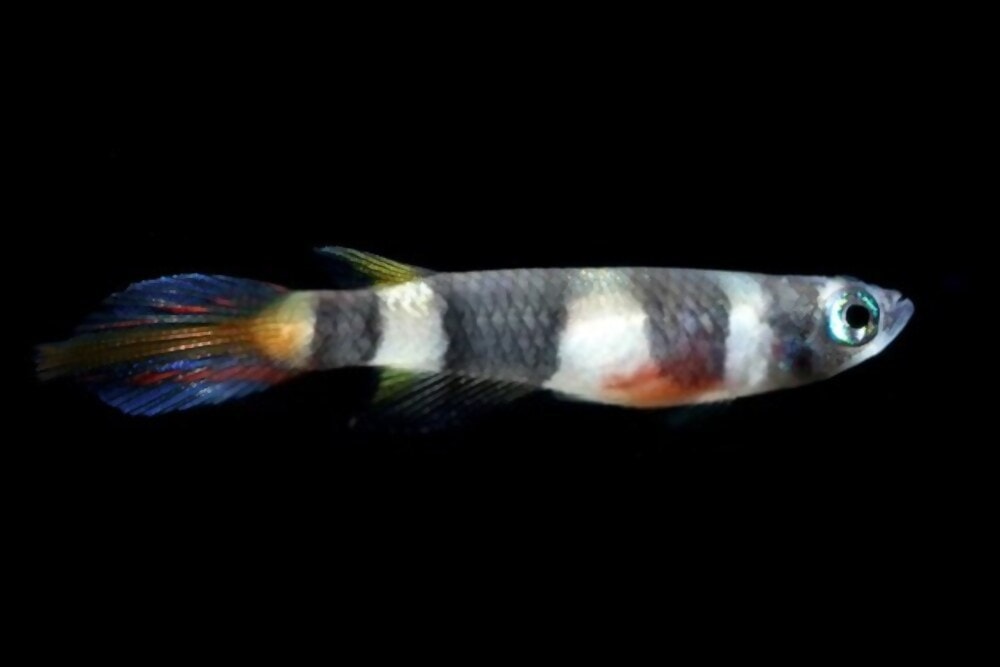
Their small bodies with a blend of vibrant and beautiful yellow, white, and black colors make them worthy of the rank that they have earned.
They have elongated bodies with somewhat torpedo or clipper in shape with a rounded head and upturned mouth.
The males are brightly colored with four thick black bands running along the body’s length vertically. The females also have the same coloration, but they are dull, and the males display predominantly vibrant colors, which help determine the sexes and the size.
The caudal fin is prominent with a spade shape having central rays elongated and red or pale orange in males, Whereas the females can have a colorless caudal fin or just a small faint red spot along with the elongated rays.
The anal fin in males may vary between blue in red outline or red in blue outline, while the females may have clear to the pale amber anal fin. The dorsal fin may have a tint of red or bright blue in males, which is clear in females.
Clown Killifish Lifespan
The Average lifespan of clown killifish in the wild is 2-2.5 years, while in the aquarium if properly cared for and provided with optimal conditions, they can even live up to three years.
Although there is not much to take care of regarding their requirements, they need stable soft water and hideouts to make them feel at home.
Clown Killifish Care
When it comes to aquarium care, the clown killifish need a moderate level of care. Although we don’t generally recommend that novice aquarists start their hobbies with these fish caring for them isn’t that big of a deal.
Banded Killifish – Size, Appearance, Diet, Caring, Habitat, Aquarium, Tank Mates
With proper research and following the experienced store owner’s instructions, you are good to go with clown killifish even though you are a beginner.
The main objective of caring for them is to replicate their wild habitat in the aquarium to provide them with optimum water parameters and the essential tank accessories.
The best that we recommend wing to their micro size is that they should be kept in a species-specific tank, although they are known to be wonderful community fish.
They prefer areas of water with little water movements and densely grown with vegetation in the natural environment. So this is quite clear that these are aquarium fish with little to no water movements.
Though you cannot fully eliminate the movements or currents, that’s okay too because it is not big of a deal. Moreover, keep a keen check on water pH and hardness naturally. You will find their habitat to be soft and acidic.
The optimum temperature for the clown killifish is 75-78 ⁰F, and the pH is 6.0, whereas the water hardness should not exceed 50 ppm.
The best way to regulate the water carbonate level is to precondition the water with the box filter loaded with waterlogged peat and keep it running for 3 to 4 days. Moreover, 10% of weekly water change is highly important.
Clown Killifish Diet & Feeding
Clown killifish are completely carnivores, and in the wild, they will feed on anything that fits in their mouth. The clown killers are miniature versions of large predatory fish we know as a pike regarding feeding preferences.
Any living being of their compatible eating size is their potential prey. They don’t chase for their prey. Instead, they wait patiently, just a little below the surface, hiding in the vegetation.
As far as feeding them in the home aquarium is concerned, the flake foods or commercially prepared special foods for carnivorous species are not acceptable by the clown killifish at all. They will only prefer anything for food which is meaty.
Some aren’t even good with the frozen version of the meaty food. They usually love to feed on live foods like fruit flies, flour beetles and their larvae, newly hatched brine shrimp, copepods, daphnia, and small worms.
Feeding them twice a day with the amount they can finish under two minutes is more than enough.
Clown Killifish Habitat & Behavior
As mentioned previously, these are native to African freshwaters, where they are geographically centered mainly in the western African waters.
They naturally inhabit the shallow and slow-moving water bodies like shallow lakes, ponds, and water holes. Vegetation is the most important component of their habitat, where they get protection and shelter.
They are thought to be very uncommon, and seasonal water reservoirs impose a threat on them.
Clown killies are extremely amazing fish with not just their great colors but also their behavioral adaptations. They are not fond of schooling or grouping, and the individuals rather prefer to be alone.
However, young and new hatchlings do prefer some company. They are community fish, but their requirement of still aquarium species-specific small tanks is best for them. In the home aquarium, they should be kept in pairs.
Two or more males will fight to pair up with the females. This won’t prove to be a tight head-on, but still, prevention is better than cure.
Ideal Tank Size For Clown Killifish
Regarding the aquarium’s size, the findings of several experienced killifish hobbyists suggest that the clown killifish are just fine with the tank of any size provided the water movements are absent or not too strong.
Their small bodies can easily be kept in micro and nano tanks, but because filtration produces strong water currents in small tanks, they are not suitable for clown killifish.
The most important thing you need to keep in mind while buying specie specific tank for clown killies is that these fish inhabit the first 5 to 6 inches of your water column.
Instead of getting confused about the tank parameters, buy the long tank and shallow tank, which can support enough vegetation and a pair of your clown.
Based on probabilities and strong suggestions by expert hobbyists, we recommend the tank size of 5 gallons for a couple of pairs of clown killifish.
Tank Setup For Clown Killifish
Setting the house for them is easy because you don’t have to set up the tank’s filtration unit. What you have to do is to plant the tank with a lot of floating plants.
These plants provide them with a sense of security. Also, plants offer them places to spawn and fry to take refuge on. One more thing that you can not neglect is that they are great jumpers, and you will need a tight-fitting lid to prevent them from jumping out t death.
Because of not having any filtration setup, you will regularly need to change the water to keep its quality at best and nitrates & carbonates at a minimum.
Putting scavengers in the clown killifish tank will save you the time and effort for water changes to some extent as they will eat the leftovers and prevent them from accumulating.
Clown Killifish Tank Mates
They belong to the extremely peaceful category of the community fish. Putting them in the community fish category in the sense that they can easily get along with any peaceful species out there is fine, and we don’t have any objection over that.
But their behavior of not tolerating the strong movements of water makes us wonder whether to call them community fish or not because a majority of the community fish species need filtration as the essential component of their care.
Well, the latter might not what everyone thinks. Given below is the list of some suitable tank mates for your clown killifish.
- Some varieties of tetra
- Small barbs
- Minnows
- Danios
- Bettas
- Gouramis
- Small plecos
Clown Killifish Breeding
Clown killifish are known to spawn readily in the home aquariums. But on an exact condition, that is to have correct water parameters.
Have a couple of pairs together in a 5-gallon tank, as we discussed previously. If all the conditions favor spawning, the males will establish the pairs. But before that, you might see a small head-on between the males to win the partner.
In a well-decorated and clean environment, these fish are ready to breed every two weeks. A pair may produce 50 fries during the singles breeding session. After the fries have been hatched, they will hide around the vegetation.
It’s better to take them out of the main tank as they can get eaten by their parents. The first food of the fry should include green algae and infusoria.
Within couple or three days, the fry will start eating small worms, and a few weeks from that, you can start feeding them the same food as adults.
FAQs
Can clown killifish live alone?
They can be kept together in a pair or a small shoal. But instinctively they wouldn’t mind being alone, mostly seen in the wild.
What do you feed clown killifish?
These fish are obligate carnivores, and as previously discussed, they will prefer live foods. However, you can also go on with the frozen foods that may be troublesome as you can face food rejections.
In the home aquarium, the best and most recommended live foods for clown killifish are flour beetles and their larvae, mosquito larvae, brine shrimps, bloodworms, copepods, and other small worms.
Final Words
Although it is a freshwater species but possesses natural tendencies to live in brackish waters, this is a very common fish among killifish enthusiasts worldwide.
From size to behavior, from appearance to interaction in the community tank, the clown killifish is an amazing package. This guide will help you know all the essentials of keeping this fish.
